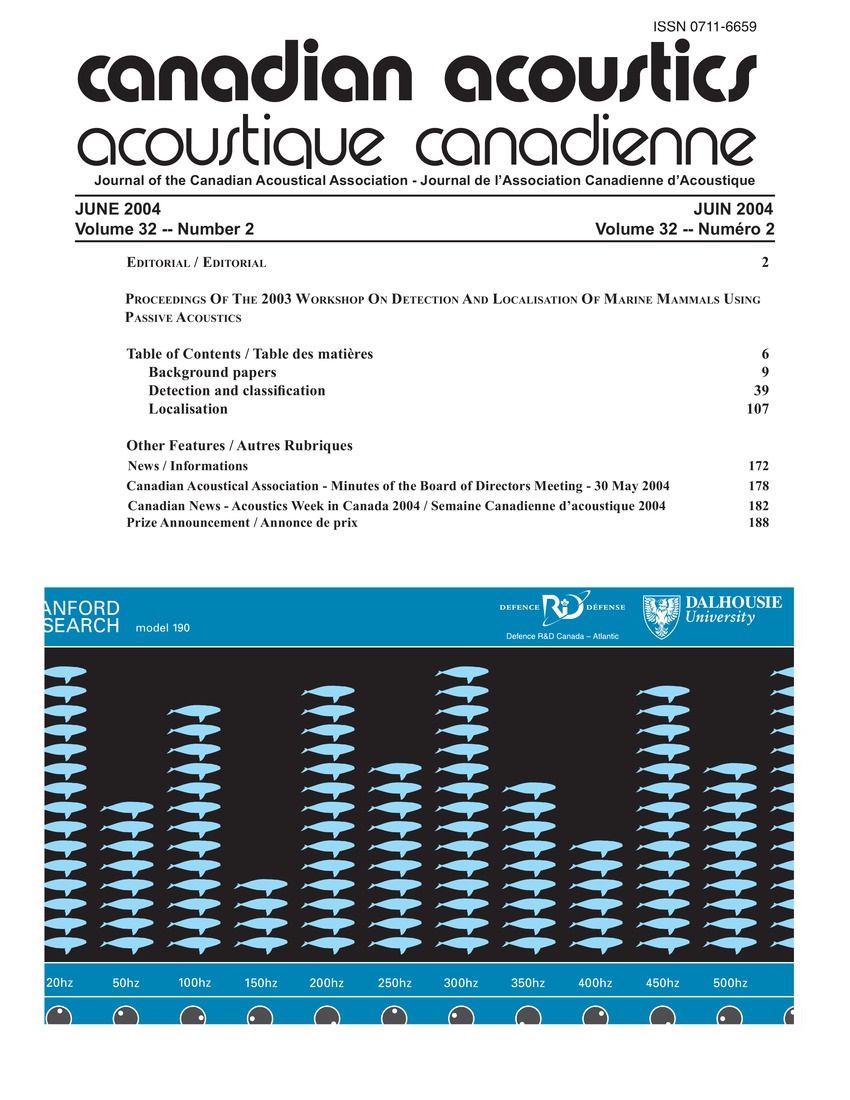A two-stage method for determining the position and corresponding precision of marine mammal sounds
Keywords:
Ecosystems, Hydrophones, Iterative methods, Least squares approximations, Matrix algebra, Sonar, Detrimental effects, Marine mammals, Position accuracy, Two-stage methodsAbstract
Today there is a concern that man-made sounds, such as that from sonar experiments, seismic operations and oil rigs, affect marine mammals. Detection and localisation of marine mammals will definitely support measures to reduce the possible detrimental effects. This paper presents a two-stage localisation method, which is applied to data collected with an array of five hydrophones moored to the seabed in the Bay of Fundy, Canada. The array forms a 14 by 14 km square with one hydrophone in the centre. The method makes use of the relative travel times of the mammal's sound to the four hydrophones at the square vertices with respect to the travel time to the central hydrophone. First, a good initial position is obtained using hyperbolic fixing. In the second step the solution is improved in an iterative process, where each iteration determines the least-squares solution of the set of four linearized equations for the measured relative travel times. Calculating the error ellipse from the covariance matrix of the solution provides the localisation accuracy. There are several parameters that affect the source position accuracy. These include the uncertainties in arrival times, sound speed and receiver positions. Their effect on the localisation accuracy is assessed.Additional Files
Published
How to Cite
Issue
Section
License
Author Licensing Addendum
This Licensing Addendum ("Addendum") is entered into between the undersigned Author(s) and Canadian Acoustics journal published by the Canadian Acoustical Association (hereinafter referred to as the "Publisher"). The Author(s) and the Publisher agree as follows:
-
Retained Rights: The Author(s) retain(s) the following rights:
- The right to reproduce, distribute, and publicly display the Work on the Author's personal website or the website of the Author's institution.
- The right to use the Work in the Author's teaching activities and presentations.
- The right to include the Work in a compilation for the Author's personal use, not for sale.
-
Grant of License: The Author(s) grant(s) to the Publisher a worldwide exclusive license to publish, reproduce, distribute, and display the Work in Canadian Acoustics and any other formats and media deemed appropriate by the Publisher.
-
Attribution: The Publisher agrees to include proper attribution to the Author(s) in all publications and reproductions of the Work.
-
No Conflict: This Addendum is intended to be in harmony with, and not in conflict with, the terms and conditions of the original agreement entered into between the Author(s) and the Publisher.
-
Copyright Clause: Copyright on articles is held by the Author(s). The corresponding Author has the right to grant on behalf of all Authors and does grant on behalf of all Authors, a worldwide exclusive license to the Publisher and its licensees in perpetuity, in all forms, formats, and media (whether known now or created in the future), including but not limited to the rights to publish, reproduce, distribute, display, store, translate, create adaptations, reprints, include within collections, and create summaries, extracts, and/or abstracts of the Contribution.


